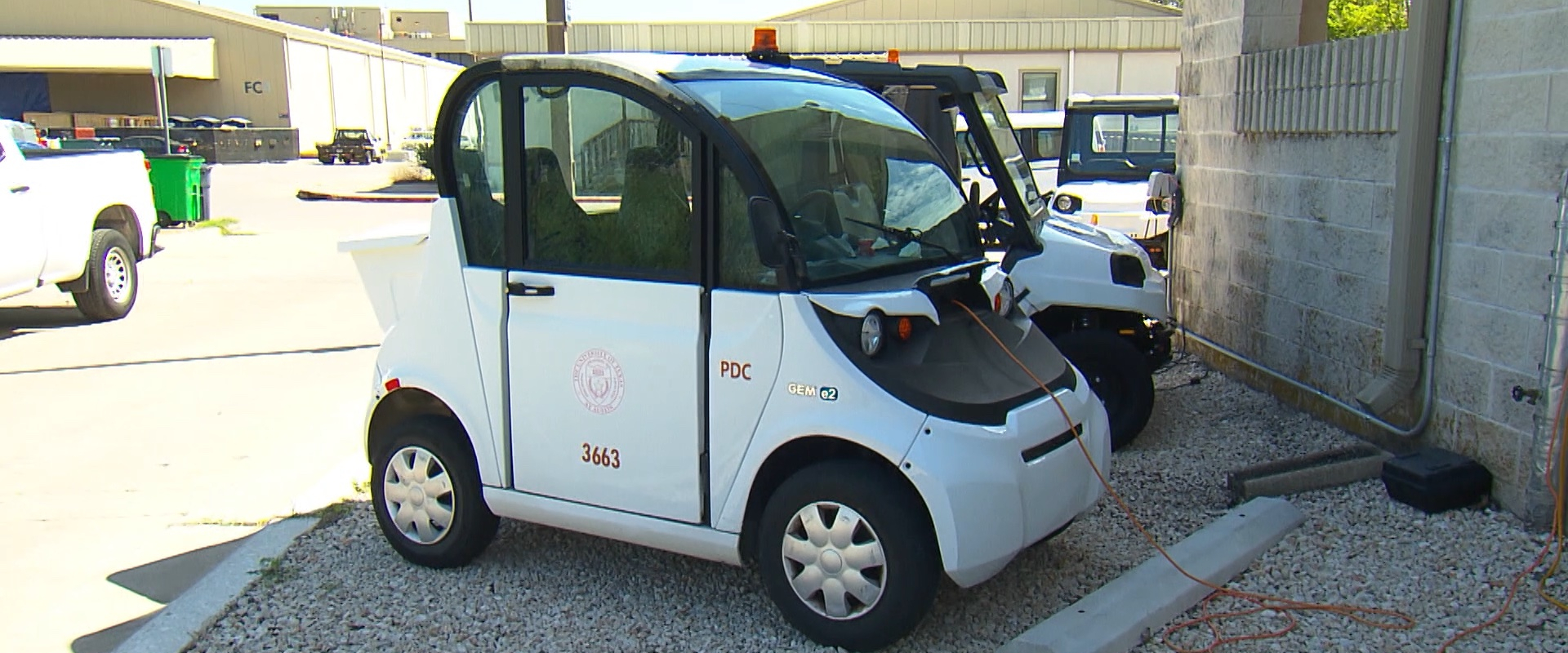University of Texas Alternative Fuels Fleet
We often talk about the benefits of alternative fuels, especially in fleet applications. And our most recent trip took us back to school at the University of Texas, where we got a higher education in the practical use of clean energy!
Some 52,000 students attend the University of Texas at Austin. This urban campus includes an iconic stadium, a landmark clock tower, dorms, dining halls and classrooms; and wherever you look, people on the move.
As you can imagine, it takes a monumental effort to keep this city within a city running smoothly. And one of the hardest workers on the UT support team is a fleet of small but mighty vehicles that prowl the campus, seemingly everywhere at once, assisting in everything from lawncare to lighting, and power supply to parking.
MICHAEL E. MAROTTA: I’m Michael E. Marotta, I’m a parking enforcement officer for the University of Texas, and I write tickets all day long!
Well, the vehicle is a three-wheeled electric cart and I like it for its maneuverability more than anything else. It will do a turn in one of these narrow streets without having to do a three-point turn the way even a four-wheel cart or, of course, our small trucks will have to do.
JOHN DAVIS: Low-speed electric vehicles, or LSV’s, make up more than half of the university’s support fleet.
Some are specialized, like this three-wheeler, where maneuverability is key, while others are versatile enough to haul people, equipment and cargo anywhere on campus, and to places a regular car or truck can’t reach.
MARK KALIGIAN: EVs are used by almost every department on campus. The landscapers use them because they can get right to the place where they’re working, whether it be the rock gardens or right to the flower beds, et cetera.
The custodial staff likes it because they can bring their equipment, the cleaning equipment, straight to the front door, don’t have to park and load it in, so there’s a real advantage to getting close to the buildings, or close to the work site.
First of all, they’re easy to park. We have a parking problem on campus. They’re student-friendly because you can ride them on sidewalks and around. They’re more maneuverable.
Austin itself is as very nature-friendly, environmentally-friendly city. We have a group on campus called the Office of Sustainability which sort of monitors campus sustainability items, and we have a STARS report which evaluates campuses for their sustainability efforts, and having LSVs, of course, was right up their alley.

JOHN DAVIS: With help from the Lone Star Clean Fuels Alliance, the University of Texas has also installed propane fueling on-site, used by some lawn equipment, and a number of the university’s ICE vehicles run on E85. Seventeen EV cars and trucks round out their clean fleet.
But UT has been all-in on low-speed electric vehicles for years. From an initial order of 200, that number has now grown to nearly 350. These small EVs fit the bill for UT for a number of reasons.
MARK KALIGIAN: One of the advantages of EVs here on this campus is that we produce our own energy. We’ve done it for a lot of years very efficiently and very cheaply, and so producing our own electricity keeps us off the Austin grid, and it’s been really good for the EVs because we always have power.
It’s a little bit of a learning curve with an EV. But, you know, with schematics and with operators’ manuals, they’re able to figure it out pretty easily. We also get a little help from the manufacturers. So, when we buy from a specific manufacturer, they’ll give us the tools to work on the EVs, they’ll often send mechanics down to give us training in basic PM services and at least the basics of keeping them up. And the maintenance costs were somewhere in the 30 to 40 cents-a-mile cheaper than a combustion engine.

Basically, we’re doing tires, we’re doing… Lube the chassis, we’re doing occasional batteries every three to five years. Batteries, and that’s really all you do to electric vehicles for the first ten to twelve years.
MICHAEL E. MAROTTA: In the wintertime, when you’re running the heater and the blower at the same time, you’ll run the battery down in a couple of days. But with the weather being nicer, the way it is in Texas 300 days a year, the battery was charged four days ago and it’s still good.
JOHN DAVIS: One common trait of successful fleet operations is right-sizing your vehicles to meet your needs. They say everything is bigger in Texas, but in this case, smaller is definitely better, and smarter!








